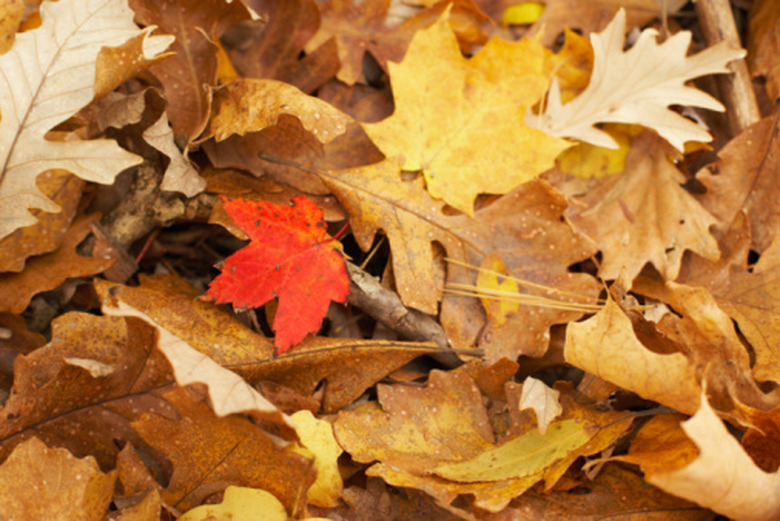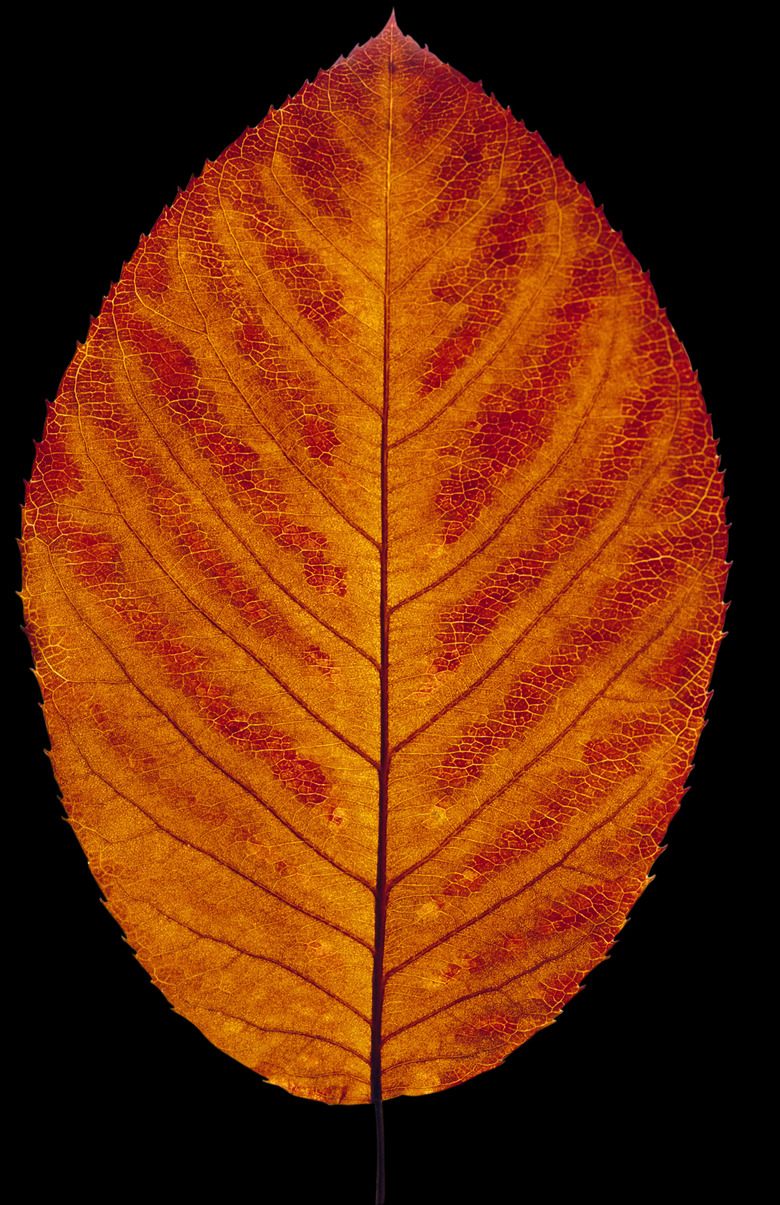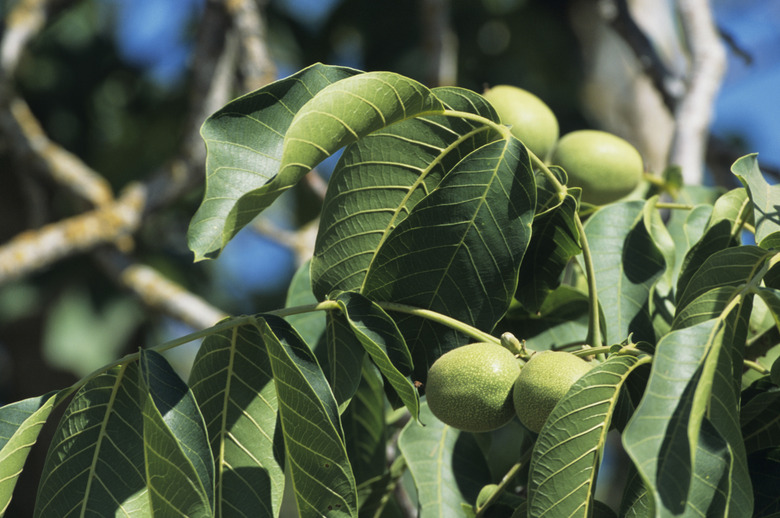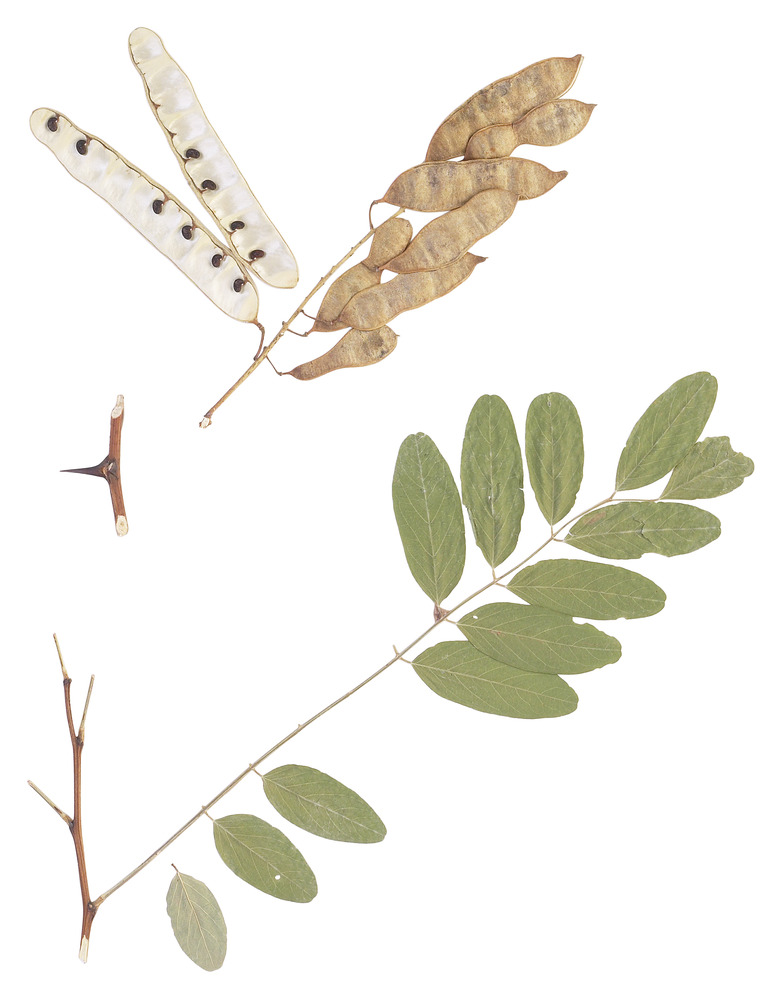Types Of Deciduous Trees
Deciduous trees go through a process called abscission, in which the trees molt unneeded parts, usually the leaves. Most deciduous trees loose all their leaves annually before the tree becomes dormant in the fall/winter or during dry seasons in subtropical and tropical areas.
Deciduous trees go through a process called abscission, in which the trees molt unneeded parts, usually the leaves. Most deciduous trees loose all their leaves annually before the tree becomes dormant in the fall/winter or during dry seasons in subtropical and tropical areas. Shedding its leaves helps a deciduous tree to conserve water for dormancy. Deciduous trees are categorized into groups according to their leaf shape. Deciduous trees grow throughout the United States and Canada, with harder wood deciduous trees growing in northern forests.
Simple Leaf
Basic shaped leaves are ovate, elliptical, lanceolate or triangular and have no indentations. Deciduous trees with simple leaves are members of the rose family (Rosaceae), which includes apples, plums, cherries, hawthorns and June berry trees; members of the willow family (Salicaceae), including willows, cottonwoods, poplars and aspens; members of the dogwood family (Cornaceae); and members of the birch family (Betula). Other simple-leaved deciduous trees are sycamore (Platanus occidentalis); pawpaw (Asimina triloba); cucumber tree (Magnolia acuminate); American chestnut (Castanea dentate); and ginkgo (Ginkgoaceae).
- Deciduous trees go through a process called abscission, in which the trees molt unneeded parts, usually the leaves.
Lobed Leaf
Trees with lobed leaves have simple-shaped leaves that have lobes or clefts. Most types of oak and maples have lobed leaves. Members of the maple family (Aceraceae) include Amur maple (Acer ginnala); silver maple (Acer saccharinum); sugar maple (Acer saccharum); and Norway maple (Acer platanoides). They all have lobed leaves that are shed in the fall. Most oak trees have lobed leaves; a few examples are the English oak (Quercus robur); pin oak (Quercus palustris); post oak (Quercus stellata); red oak (Quercus rudra), black oak (Quercus velutina); and the white oak (Quercs alba). Other types of lobed-leaf deciduous trees are the white poplar (Populus alba); sassafras tree (Sassafras albidum); sweetgum (Liquidambar styraciflua); and tuliptree (Liriodendron tulipifera).
Compound Leaf
Trees with compound leaves have multiple leaflets that spout from a single leaf stalk. Members of the walnut family (Juglandaceae), like the red hickory (Carya glabra); black walnut (Juglans nigra); and butternut (Juglans cinerea) all have compound leaves. Other deciduous trees with compound leaves are boxelder (Acer negundo); bladdernut (Staphyleaceae); ash trees, ailanthus and sumacs.
- Trees with lobed leaves have simple-shaped leaves that have lobes or clefts.
- Other deciduous trees with compound leaves are boxelder (Acer negundo); bladdernut (Staphyleaceae); ash trees, ailanthus and sumacs.
Double Compound Leaf
Trees with multiple sets of compound leaves on a single leaf stalk are double compound. Members of the horse-chestnut family (Hippocastanaceae), which includes yellow buckeye (Aesculus octandra) and horse-chestnut (Aesculus hippocastanum) have double compound leaves. Trees with deciduous double compound leaves also include the Kentucky coffee tree (Gymnocladus dioicus); honeylocust (Gleditsia triacanthos); and Gregg catclaw (Acacia greggii).
References
- "Trees of North America"; C. Frank Brockman; 1986
- "North American Wildlife"; Reader's Digest; 1982
- "Trees of Pennsylvania"; Stan Tekiela; 2004




